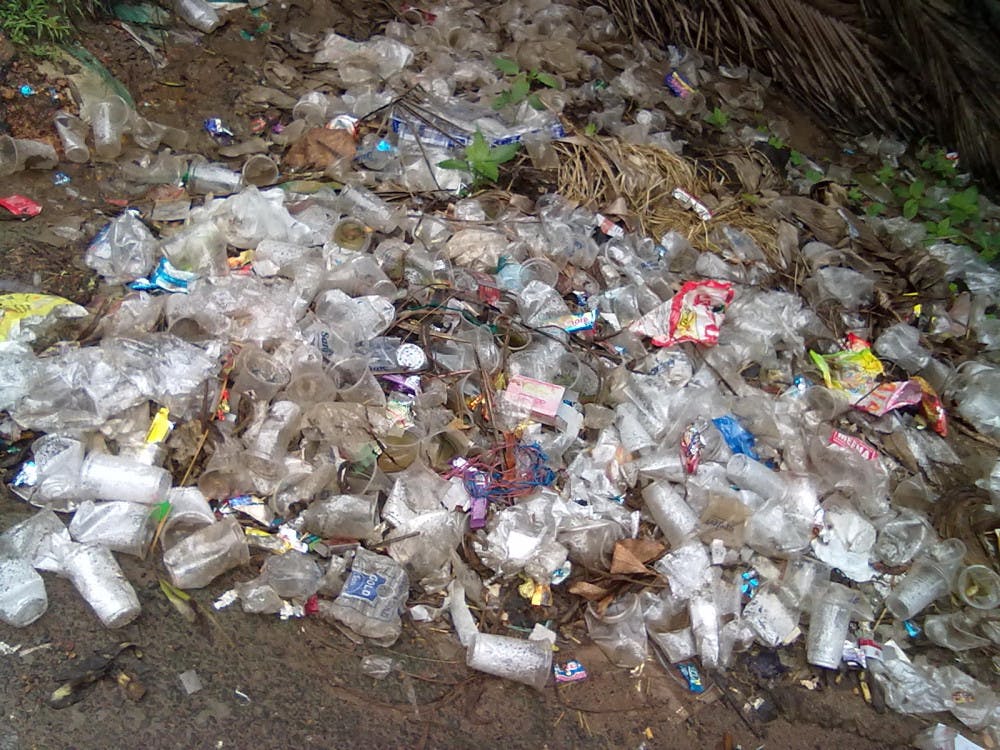
Society’s wastefulness has bothered me for some time, but it never irks me more than when I am on a college campus. All you can eat and à la carte dining halls fuel the main perpetrators; that is, college students whose eyes are bigger than their stomachs.
Students do not often eat with their brains and buffet-style dining halls enable them to choose a wide variety of monstrous portions. Famished from an exhausting days of classes, students reward themselves with heaping plates of pasta, chicken and sides, eating a fraction before realizing they could not possibly consume another morsel. But no one thinks twice about it. The next day, the same students will be in the same lines at the same dining halls taking too much food and throwing away whatever is left before they leave without giving it a second thought.
And why should they?
40 percent of all food grown in the Unites States will not be eaten, a recent article in the BBC notes. Colleges are responsible for hundreds to thousands of pounds of food waste every week, and students, although heavily responsible, are not the only ones to blame. Improper food manufacture by kitchen workers, abiding by expiration dates-an unavoidable cause-and carelessness with handling food are all reasons edible food gets thrown away.
Not only is food waste, well, wasteful, it’s also harmful to the environment. NPR'S "The Salt" features an article that states, based on the USDA’s estimates of annual food loss, waste is responsible for the emission of 350 million tons of greenhouse gases per year.
These calculations are taken without considering the energy required to cook, package or transport the food. When that is factored in, wasting meat items such as beef, which the Environmental Working Group found emits 27 kilograms of greenhouse gases for every kilogram eaten, becomes a lot more costly.
According NPR’s article, certain foods-such as chicken, fish and fruit-are wasted far more often than things like beans and nuts. The Huffington Post wrote an article naming the top ten biggest greenhouse gas emitting foods. Not surprisingly, beef and cheese were top offenders. Both products come from animals that produce Methane-a greenhouse gas more potent but less common than Carbon Dioxide-through their digestive process.
Food’s carbon footprint used to be measured in a unit coined, “food miles”, which stood for the distance food travelled. Recently, some are arguing that the way food is produced has a bigger impact on its carbon footprint than how far it travels, suggesting that scientists should focus on measuring the production rather than the transportation.
The Environmental Working Group found that feed production, particularly the production of grain to fatten livestock, contributes heftily to harmful gas emissions. The process of farming grain, which is needed in large quantities to accommodate the estimated 7 billion industrially produced livestock, requires nearly 150 million acres of cropland, 167 million pounds of pesticides and 17 billion pounds of fertilizer.
In addition, millions of tax-payer dollars, through the enactment of the federal farm bill, subsidize feed crop. That means, essentially, when you purchase meat in the grocery store, you have paid for it twice.
Consumerism plays a role in the consumption of food and, by extension, has a hand in the negative environmental consequences that accompany careless shopping. Whether browsing through the grocery store or standing in line at the dining hall, it is vital to choose conscientiously. The half-eaten hamburger you toss out is not only monetarily costly, but also environmentally costly.
Photo License: Creative Commons
Opinion: The Apathetic Epidemic

